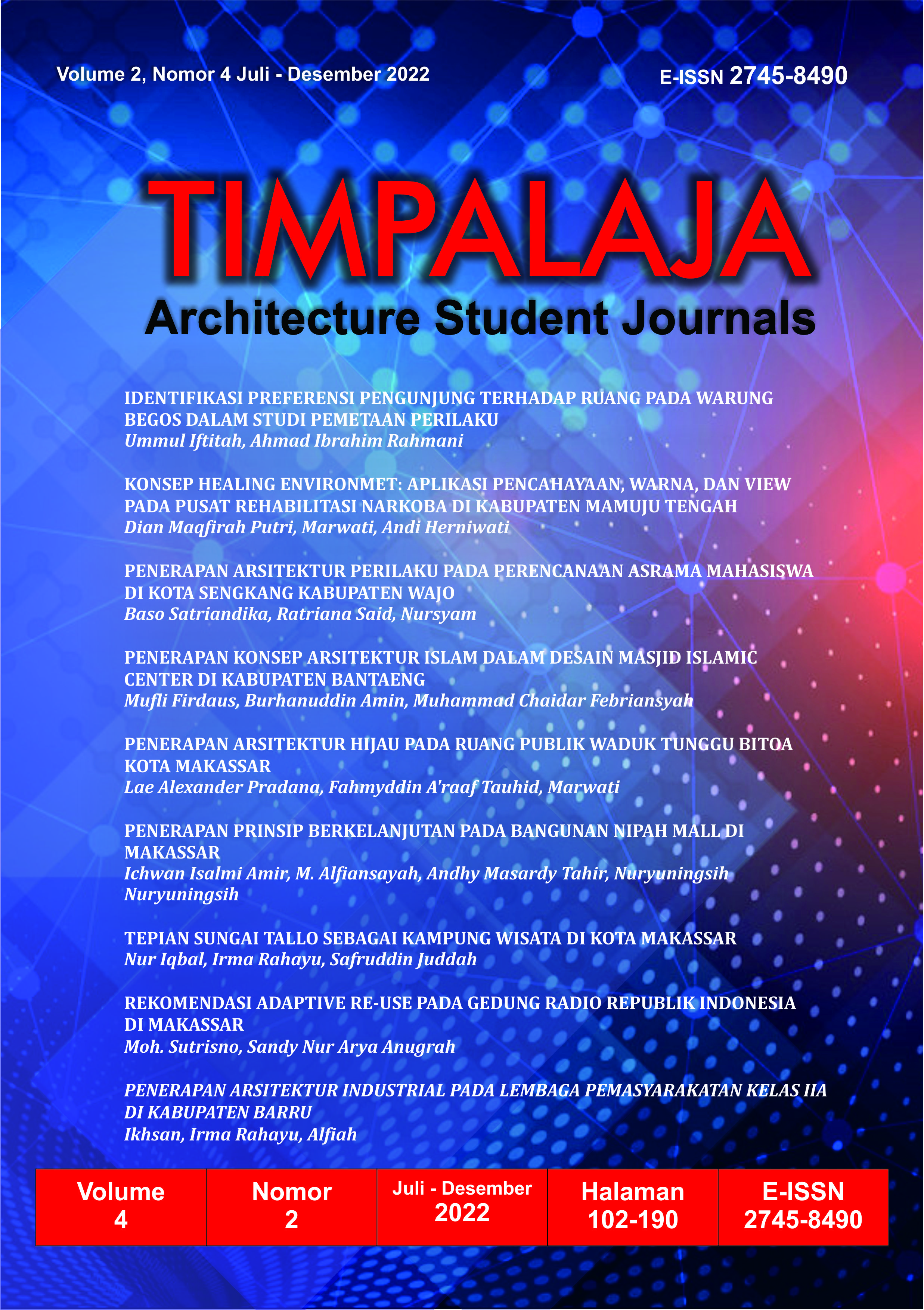Penerapan Arsitektur Perilaku Pada Perencanaan Asrama Mahasiswa Di Kota Sengkang Kabupaten Wajo
Abstract
Planning for student dormitories is a means of fulfilling residential needs for students in Sengkang city, Wajo district. As for this design research using the method of literature study and field studies with in-depth interview techniques, observation and documentation. The object of this research focuses on the Puanrimagalatung University and the Lamaddukeleng Campus which are close together. The architectural approach used in planning student dormitories uses behavioral architecture with the aim of regulating behavior and minimizing deviant behavior in student building users. The design results obtained are able to provide comfort in terms of student accessibility to campus and the infrastructure that supports the lives of its residents. In addition, this dormitory planning also pays attention to meeting the needs of dormitory residents by providing supporting facilities in the hostel environment.
References
Agus. (2018). Kajian Bentuk dan Makna Corak Pada Kain Sutera Kota Sengkang Kabupaten Wajo. Pakistan Research Journal of Management Sciences, 7(5), 1–2.
Google maps. (2022). Jarak Universitas Puanrimagaltung dengan Kampus Lamaddukelleng. https://tinyurl.com/edbycdk7
Harris, C. M. (2006). Dictionary of Architecture & Construction. McGraw-Hill.
Heimsath, C. (1988). Arsitektur dari Segi Perilaku. Intermatra.
Kamus Bahasa Indonesia. (2008). Kamus Pusat Bahasa.
Karyono, T. H. (2015). Dari Kenyamanan Termis hingga Pemanasan Bumi : Suatu Tinjauan Arsitektur Dan Energi.
Kolcaba, K. (2003). Comfort Theory and Practice. In Springer Publishing Co.
Razani, A. (2017). Pemanfaatan Ruang Bersama sebagai Area Belajar Pada Asrama Putra Universitas Brawijaya Malang. Jurnal Mahasiswa Jurusan Arsitektur.
Snyder, J. C., & Catanese, A. J. (1984). Pengantar Arsitektur. Erlangga.
Wulandari, R. (2016). Analisa Kaitan Desain Asrama dengan Perilaku Penghuni Melalui Studi Analisa Konten Penelitian Sejenis. Idealog: Ide Dan Dialog Indonesia.
Copyright (c) 2022 Baso Satriandika, Ratriana Said, Nursyam Nursyam

This work is licensed under a Creative Commons Attribution-ShareAlike 4.0 International License.
By submitting your manuscript to our journal, you are following Copyright and License







